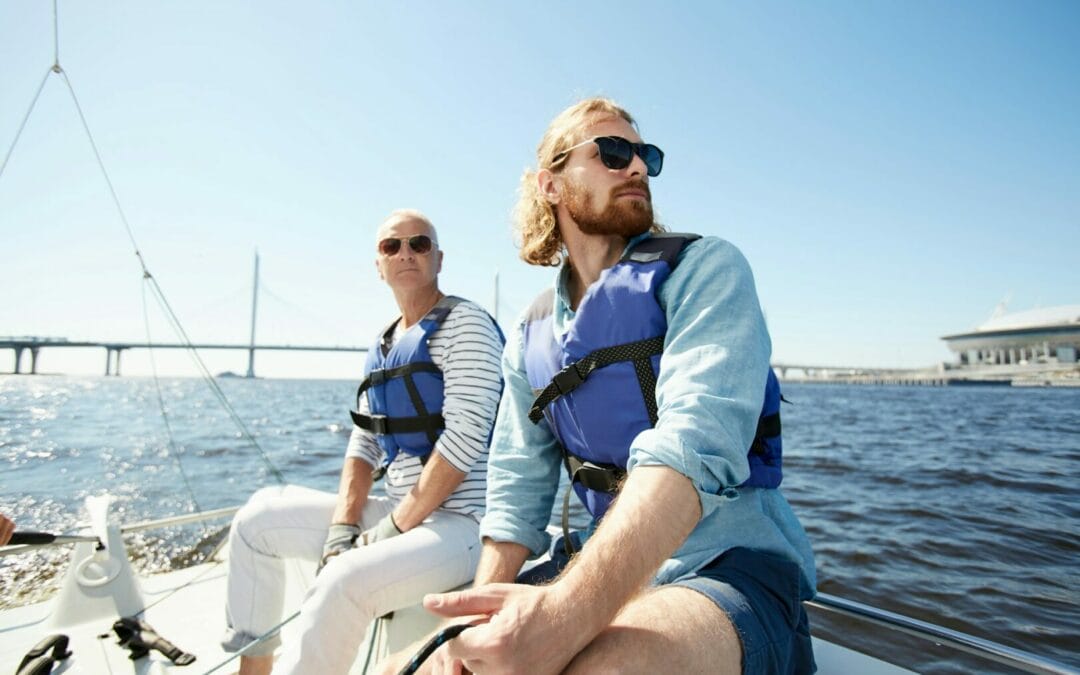Ensuring safety aboard yachts is not just a precaution; it’s a necessity. Whether you’re planning a leisurely cruise in familiar waters or preparing for an extensive sea journey, having the right safety equipment is vital. We emphasize the importance of being equipped with both basic and advanced safety gear to protect all on board. This commitment to safety helps create an environment where everyone can relax and enjoy the adventure with peace of mind.
Safety is as crucial as the yacht itself. It’s about more than just complying with regulations—it’s about fostering a culture of care and readiness. Our goal is to make sure that whether you’re a new yacht owner or a seasoned sailor, you have the knowledge and tools at your disposal to deal with any situation that might arise on the water. Let’s discuss how proper equipment, advanced technologies, and regular training not only enhance safety but also enrich your yachting experience.
Basic Safety Equipment Every Yacht Should Have
Every vessel we outfit is equipped with fundamental safety gear, crucial for handling emergencies and maintaining security while on the water. At the core of basic safety equipment, you’ll find life jackets for every individual aboard. It’s not just about having them, though; it’s about ensuring they are easily accessible and fit properly. We also emphasize the importance of having life rafts, particularly on larger voyages, and flares to signal for help if you’re ever in distress.
Alongside these essentials, fire extinguishers, first aid kits, and VHF radios form the trifecta of basic emergency response items that no yacht should be without. These tools are vital for initial incident management, providing a means to communicate with the coast guard and other boats if necessary. Ensuring that these items are well-maintained and regularly checked is part of our comprehensive safety protocol we encourage for every yacht owner.
Advanced Safety Technologies for Enhanced Protection
Advancing beyond the basics, incorporating cutting-edge safety technologies is something we advocate for enhanced protection. Modern yachts can be equipped with Automatic Identification Systems (AIS) that not only help in navigation but significantly improve safety by making your vessel visible to others in busy or foggy passages. Similarly, integrating Electronic Chart Display and Information Systems (ECDIS) provides real-time information on maritime traffic and potential hazards, vital for navigating unfamiliar waters safely.
On top of navigational aids, we also recommend installation of man-overboard (MOB) systems. These advanced technologies alert you immediately if someone falls into the water, making swift recovery possible. For those who venture further off the beaten path, upgrading to radar systems that can detect obstacles miles away—even in poor visibility conditions—ensures that you’re prepared for whatever lies ahead. These technologies not only safeguard the yacht and its occupants but also provide peace of mind, making the sailing experience more enjoyable and stress-free.
Regular Safety Drills and Training for Crew and Passengers
Incorporating regular safety drills and training sessions for both crew and passengers is crucial for ensuring that everyone on board is prepared for emergency situations. We recommend conducting these drills shortly after departure, familiarizing everyone with the locations of life jackets, emergency exits, and safety equipment. It isn’t just about knowing where things are; it’s also about knowing how to use them under pressure.
Furthermore, these drills should include practicing the use of flotation devices, operating fire extinguishers, and understanding the signs of common maritime distress signals. Training in radio communication protocols for emergencies can also be a lifesaver, ensuring that messages are not just sent but understood by rescue services or nearby ships. This proactive approach not only boosts confidence among passengers but also fortifies the knowledgeable response of the crew under unexpected circumstances.
Maintaining and Upgrading Safety Gear: Best Practices
Maintaining and periodically upgrading your yacht’s safety gear is another essential aspect of maritime safety that should never be overlooked. This includes regular inspections to ensure all safety equipment is in good working order and meets current regulatory standards. We advocate for a scheduled review of all safety gear at least twice a year, with additional checks before long or particularly risky trips.
Replacing outdated or worn-out equipment is also crucial. Advances in technology mean that newer, more efficient safety devices are constantly becoming available. Integrating these innovations into your safety protocols not only enhances your overall safety readiness but can simplify processes, reduce risks, and give you and your passengers peace of mind.
Conclusion
Safety on the water is always our top priority at Slate Yachts. Equipping your yacht with the necessary safety gear, embracing advanced safety technologies, conducting regular training drills, and maintaining your equipment are all essential steps to ensure a safe and enjoyable yachting experience. Each of these strategies contributes to a culture of safety that protects both you and your loved ones.
Remember, being prepared isn’t just about meeting the necessary requirements—it’s about creating a secure environment so everyone aboard can relax and enjoy the journey. For further details on the best yachting practices or to find your next yacht equipped with the top safety gear, don’t hesitate to reach out to us at Slate Yachts, where your safety is our legacy.

